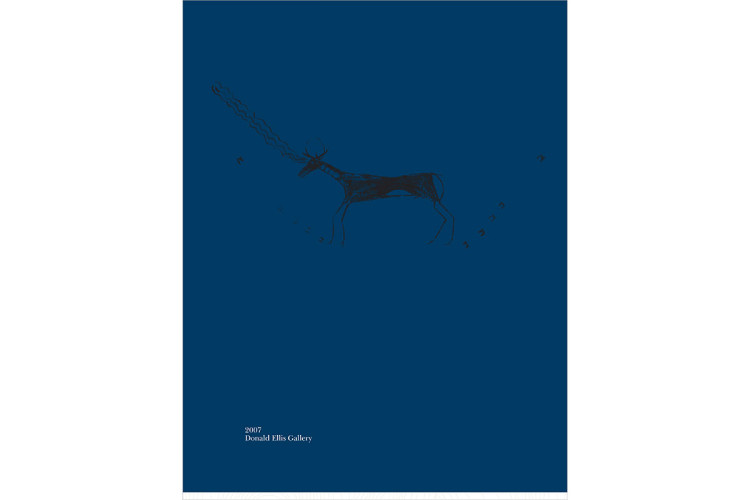
2007
$35.00 USD
ca. 1840-50
wool broad cloth, glass beads, silk ribbon
height: 61"
Inventory # CW3453
Sold
acquired by the Minneapolis Institute of Art, Minneapolis, MN
Believed to have been made by Jane Dickson LaFramboise (b. ca. 1820) in 1845, then by descent through the family
Donald Ellis Gallery catalogue, 2007, pgs. 40-41
Coe, Ralph T. Sacred Circles: Two Thousand Years of North American Indian Art. Kansas City: Nelson Gallery of Art, 1977, pls. 127 and 129
This beautiful blanket or cape is believed to have been made by Jane Dickson in celebration of her marriage to fur trader Joseph LaFramboise in 1845. Both parties were of mixed Indigenous and Euro-Canadian descent. Born in 1820 in Pembina Territory in western Minnesota, Jane Dickson’s mother was Anishinaabe and Scottish-Canadian while her father was the grandson of Wakiŋyanduta (Red Thunder), a prominent Dakota leader. Her maternal grandfather Robert Dickson, who fought with the British during the war of 1812 before joining the American Fur Company. Joseph LaFramboise was the son of Madeline LaFramboise, one of the most successful fur traders in the Northwest Territory and granddaughter of Chief Kewinoquot of the Ottawa. In 1832, LaFramboise set up his first trading post in Murray County, Minnesota, and also served as an interpreter in negotiations between the Dakota and the US government. LaFramboise also worked for the American Fur Company under Henry H. Sibley, guiding personalities such as John C. Freemont, Joseph Nicollet and George Catlin out onto the Coteau.In 1845 Jane Dickson married Joseph LaFramboise at Traverse des Sioux in what was believed to be the first Christian marriage performed in Nicollet County, Minnesota. The oral tradition states that though theirs was a Christian marriage, this beaded blanket was worn in a native ceremony celebrating the union of Jane and Joseph.
Indeed, interethnic marriage was central to the success of the fur trade, as Dakota society was largely regulated by kinship bonds. As a result, Indigenous women held crucial cultural and economic positions, creating kinship relations central to economic exchange while contributing to the formation of new ethnic groups of mixed-heritage, later known as Métis. Indigenous women also raised their own social status through access to European goods. This impressive dance blanket is composed entirely of materials obtained through the fur trade. The large wool broadcloth is bordered on three sides with extremely fine silk appliqué decoration, while exuberant beaded foliate designs radiate from the lower corners. Anchoring the composition is a concentric foliate medallion surrounded by a pointed corona suggesting the rays of the sun. The artist’s superb level of craftsmanship and sense of colour combine to create a work of art that is extremely pleasing to behold. Prior to contact, Native women artists would have embroidered hides using dyed porcupine quills and bone tools. Both beadwork and ribbon appliqué are innovative techniques still used by Native artists to the present day.

$35.00 USD